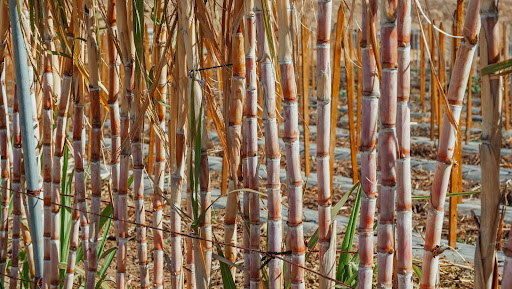Food companies consider beet sugar vs cane sugar when choosing sweeteners for different confectionery items.
Discover the Uses and Perks of Beet Sugar Vs Cane Sugar in Your Daily Diet
Checking out the distinct high qualities of beet and cane sugar reveals more than simply their sweetening capabilities; it highlights their one-of-a-kind influence on wellness and culinary arts. Beet sugar, understood for its refined flavor, is commonly favored in delicate treats, whereas cane sugar, with its hint of molasses, adds splendor to robust meals. Each kind holds its very own nutritional profile and glycemic implications, welcoming a much deeper understanding of their roles in a balanced diet plan and lasting consumption methods.
Beginning and Manufacturing Processes of Beet and Cane Sugar

The unique environments and dirt types required for growing sugar beetroots and sugarcane add to distinctions in their cultivation methods and geographical circulation, affecting the economics and sustainability of their production. beet sugar vs cane sugar.
Nutritional Comparison Between Beet Sugar and Cane Sugar
Regardless of stemming from different plants, beet sugar and cane sugar are nutritionally extremely comparable, both mostly containing sucrose. Each provides about 4 calories per gram, translating to roughly 16 calories per teaspoon. Structurally, both sugars are composed of roughly 99.95% sucrose, with very little quantities of other materials like wetness and trace element, which do not dramatically modify their nutritional profiles.

Ultimately, when picking between beet sugar and cane sugar based upon nutritional web content alone, both deal identical benefits and disadvantages as they are essentially types of the exact same particle-- sucrose, supplying fast power without various other nutrients.
Impact on Health: Glycemic Index and Caloric Material
Checking out even more right into the impacts of beet sugar and cane sugar on health, it is vital to consider their glycemic index read what he said and caloric web content. The glycemic index (GI) of both beet and cane sugar is around 65, categorizing them as high-GI foods, which can create fast spikes in blood sugar levels.
Each kind of sugar consists of around 4 calories per gram, making their calorie material matching. For those keeping an eye on caloric consumption, especially when taking care of weight or metabolic health problems, understanding this equivalence is crucial (beet sugar vs cane sugar). Extreme consumption of any type of high-calorie, high-GI food can add to health problems such as excessive weight, heart illness, and insulin resistance.
Environmental and Economic Factors To Consider of Sugar Production
Beyond health and wellness influences, the production of beet and cane sugar likewise elevates significant environmental and financial problems. Sugar beet growing often tends to require cooler climates and has a reduced geographical impact contrasted to sugar cane, which flourishes in tropical areas. Both crops are intensive in terms of water usage and land profession, possibly leading to logging and water scarcity. Economically, this hyperlink the global sugar market is extremely unstable, affected by modifications in global profession plans and subsidies. Numerous countries incentivize sugar manufacturing with financial support, skewing market value and influencing small-scale farmers negatively.
Additionally, making use of chemicals and fertilizers in both beet and cane sugar growing can result in dirt destruction and air pollution, further influencing biodiversity and local water bodies (beet sugar vs cane sugar). The choice between growing sugar beet or cane frequently rests on neighborhood ecological conditions and financial factors, making the sustainability of sugar manufacturing a complex problem
Culinary Applications and Flavor Distinctions
While the environmental and economic aspects of sugar production are indeed significant, the selection in between beet and cane sugar additionally influences cooking applications and flavor accounts. Beet sugar, acquired from the sugar beet plant, is recognized for its remarkably neutral preference.
Walking stick sugar, extracted from sugarcane, often maintains molasses traces, which present a distinct richness and depth. The small variant in moisture web content in between beet and cane sugar can influence the appearance and uniformity of dishes, making cane sugar a recommended selection for particular dishes that benefit from its unique properties.

Verdict
Finally, both beet and cane sugar have unique beginnings and manufacturing processes, supplying similar nutritional profiles with minor distinctions in sodium material and flavor. While their influence on health and wellness, particularly regarding glycemic index and calories, is similar, the option between them commonly steams down to environmental, economic aspects, and specific culinary needs. Recognizing these facets can guide consumers in making educated choices that line up with their wellness objectives great site and taste preferences.